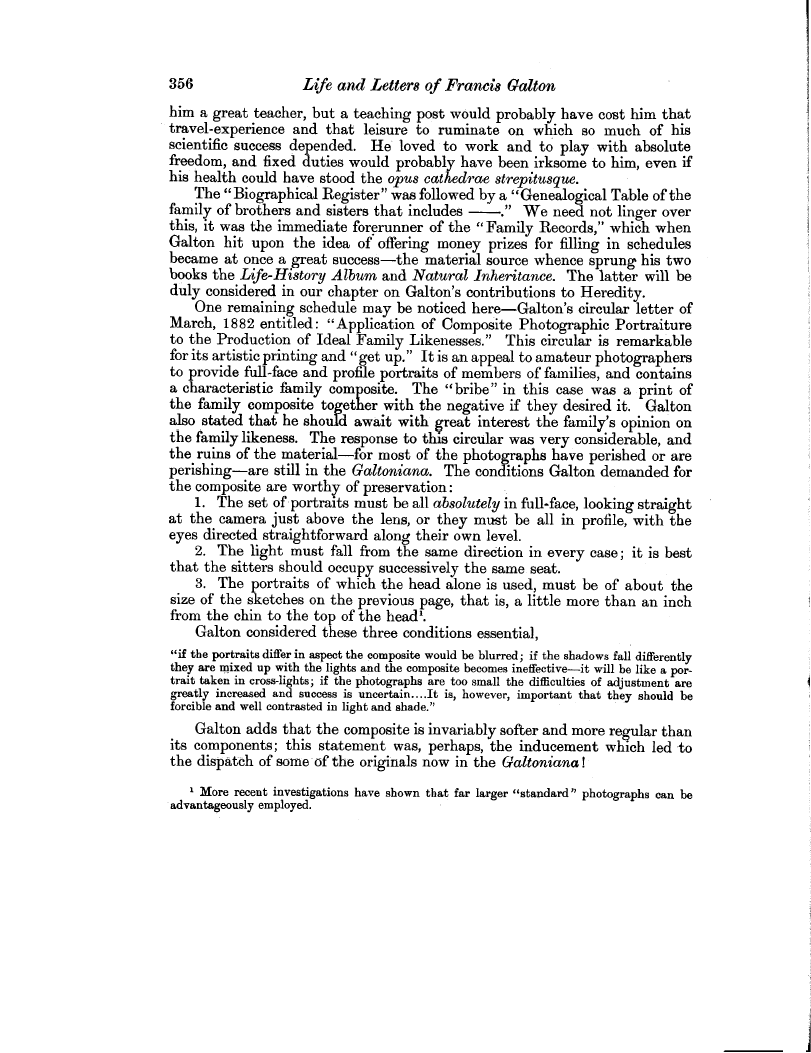356 Life and Letters of Francis Galton
him a great teacher, but a teaching post would probably have cost him that travel-experience and that leisure to ruminate on which so much of his scientific success depended. He loved to work and to play with absolute freedom, and fixed duties would probably have been irksome to him, even if his health could have stood the opus cathedrae strepitusque.
The "Biographical Register" was followed by a "Genealogical Table of the family of brothers and sisters that includes ." We need not linger over this, it was the immediate forerunner of the "Family Records," which when Galton hit upon the idea of offering money prizes for filling in schedules became at once a great success-the material source whence sprung his two books the Life-History Album and Natural Inheritance. The latter will be duly considered in our chapter on Galton's contributions to Heredity.
One remaining schedule may be noticed here-Galton's circular letter of March, 1882 entitled: "Application of Composite Photographic Portraiture to the Production of Ideal Family Likenesses." This circular is remarkable for its artistic printing and "get up." It is an appeal to amateur photographers to provide full-face and profile portraits of members of families, and contains a characteristic family composite. The "bribe" in this case was a print of the family composite together with the negative if they desired it. Galton also stated that he should await with great interest the family's opinion on the family likeness. The response to this circular was very considerable, and the ruins of the material-for most of the photographs have perished or are perishing-are still in the Galtoniana. The conditions Galton demanded for the composite are worthy of preservation
1. The set of portraits must be all absolutely in full-face, looking straight at the camera just above the lens, or they must be all in profile, with the eyes directed straightforward along their own level.
2. The light must fall from the same direction in every case; it is best that the sitters should occupy successively the same seat.
3. The portraits of which the head alone is used, must be of about the size of the sketches on the previous page, that is, a little more than an inch from the chin to the top of the head'.
Galton considered these three conditions essential,
"if the portraits differ in aspect the composite would be blurred; if the shadows fall differently they are mixed up with the lights and the composite becomes ineffective-it will be like a portrait taken in cross-lights; if the photographs are too small the difficulties of adjustment are
greatly increased and success is uncertain... .It is, however, important that they should be forcible and well contrasted in light and shade."
Galton adds that the composite is invariably softer and more regular than its components; this statement was, perhaps, the inducement which led to the dispatch of some of the originals now in the Galtoniana !
1 More recent investigations have shown that far larger "standard" photographs can be advantageously employed.

